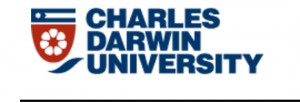In my first weblog I focused on how indigenous communities can get online. In my second weblog I want to look at the question how the internet can help to preserve indigenous culture.
Life at the Edge of the Internet
Preserving the Digital Heritage of Indigenous Cultures
Abstract
This paper presents our research and field work with the Waorani Indians in eastern Ecuador regarding how they can preserve their digital heritage and culture on the Internet. We focused on empowering the Waorani to use technology to approach the Internet on their terms: to tell their story, not have their story told, to be independent, not dependent. Using analogies to life in the jungle, we explored issues such as digital self-determination, proprietary file formats, control of material entrusted to cloud service providers, international data import/export, content ownership vs. licensing, and intellectual property.
Archival systems are only as valuable as their input data. This data is at risk due to competing economic and legal forces that can adversely influence content, digitization, ownership, and permitted usage. To address this problem, we present an encryption framework that encourages medical tourism to indigenous villages by protecting archived medical data, privacy, and constitutional rights.
http://www.unesco.org/fileadmin/MULTIMEDIA/HQ/CI/CI/pdf/mow/VC_Madsen_et_al_E_1330.pdf
How to Preserve Cultural Memory in the Digital Age
Humans are a fortunate species. We are not the strongest or fastest. We don’t have the biggest brains or live the longest. Yet we are dominant over the planet. From cuneiform to computer chip, our memory technologies give us a unique survival advantage: knowledge. But that knowledge is not secure in the digital age.
We’re moving from an information economy of relative scarcity to one of abundance. And we have yet to build an infrastructure that can manage titanic masses of data at scale. The high cost of publishing books and making films forced us to ask what we can afford to save. But anyone with an internet connection can write blogs and post home movies to YouTube. Now we must decide what we can afford to lose. […]
https://www.huffingtonpost.com/abby-smith-rumsey/culture-memory-digital_b_10357622.html
Aboriginal Culture in the Digital Age
The object of this paper is to bring a holistic perspective to the implications of ICT for Aboriginal ways of living, thinking and knowing. Is ICT the potent enabler for the promotion, renewal and enrichment of Aboriginal cultures as many claim? For example does ICT offer new possibilities for the preservation and teaching of Aboriginal languages? Within the context of increasing numbers of Aboriginal peoples living away from traditional communities in large urban melting pots, can technology help safeguard the right of Aboriginal children and young people to learn their culture and speak their Indigenous languages? On the other hand, what types of cultural risks does the new ICT broadly, but not exclusively, refer to existing and emerging digital technologies such as the computer, telecommunications, the Internet, wireless, satellite, mobile phones, etc. technology present for Aboriginal peoples? Is appropriation and distortion of traditional Aboriginal knowledge one of them, and if so, what can be done to mitigate the risks of inappropriate access and use of this knowledge? These are some of the major questions explored in this paper.
http://www.kta.on.ca/pdf/AboriginalCultureinaDigitalAge.pdf
The Use of ICT to preserve Australian Indigenous Culture and Language – a Preliminarily Proposal Using the Activity Theory Framework
Abstract
Propinquity between Australian Indigenous communities’ social structures and ICT purposed for cultural preservation is a modern area of research; hindered by the ‘digital divide’ thus limiting plentiful literature in this field in theoretical or practical applications. Consequently, community consultations become mandatory for deriving empirical and effective processes and outcomes in successful culture and language preservation and teaching of Indigenous culture in Aboriginal Australian communities. Analysis of a literature review has identified ICT as the best provision method to immortalize and teach cultural knowledge and language for Indigenous Australians determined by the accessibility of ICT’s, the capacity of Aboriginal Australians to learn to use ICT and in some instances, the increased cost effectivity for multi-community communications and meetings from geographically dispersed land councils to use ICT. This research examines the effectiveness and outputs of culturally conscious, end-user driven ICT development and implementation into contemporary Indigenous Australian social structures and communities.
Indigenous tribe in Brazil creates video game to help preserve culture
For indigenous communities grappling with how to preserve their cultures, there’s the constant question of how to bridge the gap between historical tradition and a tech-focused world. But a seemingly unusual medium has emerged as an avenue toward achieving this goal: gaming. And one indigenous tribe in Brazil is using it as a means to tell their story.
http://mashable.com/2016/03/07/indigenous-video-game-huni-kuin/#tt1rI6LKtOqu
References:
Aboriginal Culture in a Digital Age. (n.d.). Retrieved October 15, 2017, from http://www.kta.on.ca/pubRep.html
Dupere, K. (2016, March 07). Indigenous tribe in Brazil creates video game to help preserve culture. Retrieved October 15, 2017, from http://mashable.com/2016/03/07/indigenous-video-game-huni-kuin/#tt1rI6LKtOqu
Katikala, R., Madsen, K., & Mincaye Nenquimo Enqueri, G. (n.d.). Life at the Edge of the Internet Preserving the Digital Heritage of Indigenous Cultures. Retrieved October 15, 2017, from http://www.unesco.org/new/en/communication-and-information/events/calendar-of-events/events-websites/the-memory-of-the-world-in-the-digital-age-digitization-and-preservation/presentations-day-1/
Rumsey, A. S. (2016, June 14). How to Preserve Cultural Memory in the Digital Age. Retrieved October 15, 2017, from https://www.huffingtonpost.com/abby-smith-rumsey/culture-memory-digital_b_10357622.html
Van Der Meer, Sarah & Meer, Der & Smith, Stephen & Pang, Vincent. (2015). The Use of ICT to preserve Australian Indigenous Culture and Language – a Preliminarily Proposal Using the Activity Theory Framework. Retrieved October 15, 2017, from https://www.researchgate.net/profile/Sarah_Van_Der_Meer/publication/297324225_The_Use_of_ICT_to_preserve_Australian_Indigenous_Culture_and_Language_-_a_Preliminarily_Proposal_Using_the_Activity_Theory_Framework/links/56de5f9c08aeb8b66f94b0bb/The-Use-of-ICT-to-preserve-Australian-Indigenous-Culture-and-Language-a-Preliminarily-Proposal-Using-the-Activity-Theory-Framework.pdf
